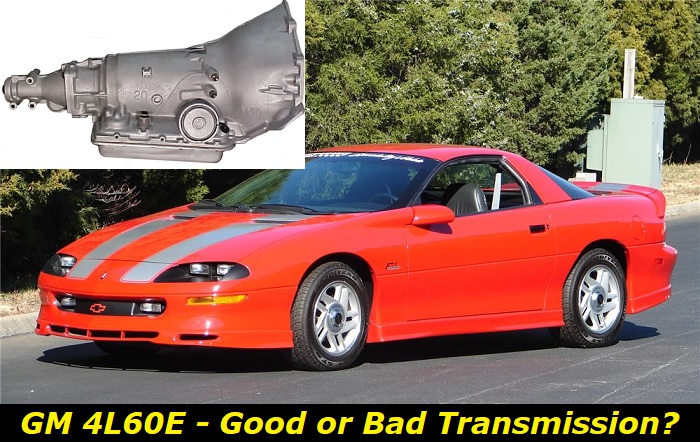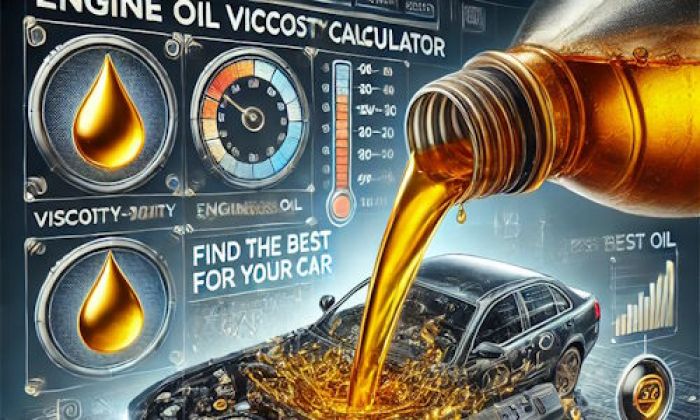GM rates the 4L60E gearbox as one of its finest. With that, the company has confidently integrated this four-speed automatic transmission into its key offerings as well as the products of its umbrella group of companies including the Hummer H3, Chevrolet Camaro, Chevrolet Corvette, GMC Sierra, and more. The production of the 4L60E lasted for two decades spanning from 1993 to 2013, which says a lot about its quality.
4L60 transmission highlights
- Average lifespan:230,000-250,000 miles
- Reliability Score:High
- Prone to minor issues:No
- Price for repair after failure:$1,000-$1,400
- Price for replacement:$2,500-$3,700
- Availability of parts:Good
- Common problems: Solenoid issues, friction plates wear, fluid pump issues, overheating problems.

Specific Problems Linked in the 4L60E Transmission
In its two decades of existence, there have been problems complained about by a number of owners of the 4L60E transmission. The most common ones are the following:
1. Burned Clutch Pack
The 4L60E transmission is equipped with a clutch pack that helps engage and disengage the gears. This part is essential in providing smooth shifting of gears, especially when starting from a stop. When this starts to malfunction, your vehicle would be very difficult to drive. In the case of the 4L60E transmission, this problem is blamed for preventing it from engaging the third gear.
If you notice any strange noises coming from your transmission, it could be an indication that your clutch pack is burnt, too. The possible reasons for a burnt clutch pack include using the wrong type of fluid in the transmission, overloading the vehicle, or shifting gears too harshly.
If you notice any of its symptoms, it's important to take your vehicle to a mechanic immediately. They will be able to diagnose the problem and determine whether or not the clutch pack needs to be replaced. In some cases, irreparable damage may have already been done to the transmission and parts will need to be replaced.
It's important to address a burnt clutch pack as soon as possible to avoid further damage to your transmission. If you neglect this problem, it could lead to major repairs or even replacement of the entire transmission.
2. Worn Piston Seals
The 4L60E transmission uses a series of pistons to help control the smooth flow of fluid and gears. Over time, these pistons can become worn and damaged, causing a variety of problems.
Worn piston seals can hinder the 4L60E transmission into shifting in the third gear. The other symptoms include leaking fluid, poor shifting quality, and increased noise from the transmission. Sometimes, the damage can be severe enough to cause the transmission to fail completely.
There are several possible causes of this problem, including normal wear and tear, improper maintenance, and excessive heat exposure. In most instances, the best solution is to replace the piston seals as well as other parts that may have been compromised as a result of the problem. However, there are certain conditions wherein irreparable damage may have occurred requiring a complete transmission rebuild or replacement.
3. Broken Drive Shell
The drive shell is the outermost layer of the 4L60E transmission. It houses and protects the inner workings of the transmission, including the gears, bearings, and other moving parts. When it breaks, it can cause a lot of trouble with your transmission.
There are things that point to a broken drive shell such as a loud humming noise from the transmission, difficulty shifting gears, especially in the second and reverse gears of the 4L60E, and leaking transmission fluid. The problem can be caused by a number of things, including worn or damaged parts inside the transmission, excessive heat, or improper lubrication.
Parts that may need to be replaced as a result of a broken drive shell include the gears, bearings, seals, and gaskets. In some cases, the entire transmission may need to be changed. If you think you have a broken drive shell, it's important to have your transmission checked by a qualified mechanic as soon as possible.
4. Torn TCC Regulator Valve
The TCC regulator valve is a component of the 4L60E automatic transmission. It regulates the amount of fluid that flows through the transmission during gear changes. When the TCC regulator valve is damaged, it can cause the transmission to slip or hesitate during gear changes. This can lead to transmission problems such as poor fuel economy, loss of power, premature wear on the transmission components, and problem in going to second gear in the case of the 4L60E.
There are several possible causes of a damaged TCC regulator valve. One common cause is debris in the fluid. This can be because of a faulty filter or an old, dirty fluid. It may stem from the problem with the pressure regulator spring as well. This spring controls the amount of pressure in the system and if it is not functioning properly, it can cause the TCC regulator valve to fail.
If the TCC regulator valve is damaged, it will need to be replaced. This is a relatively simple procedure that can be done by a qualified mechanic. However, if the damage is severe, it may require the entire transmission to be rebuilt or replaced.
5. Transmission Band Failure
The 4L60E transmission band is responsible for holding the gears in place while the vehicle is in motion. When this band fails, the gears can slip out of place, which can bring about a loss of power and control.
The symptoms of transmission band failure include a loss of power while driving, slipping gears, and grinding noises coming from the transmission. The possible roots of this problem include wear and tear, improper installation, and damaged parts. The possible solutions include replacing worn or damaged parts, properly installing the transmission band, and adjusting the tension on the band. In a worst-case scenario setting, irreparable damage may occur to the transmission, requiring a complete replacement.
6. Faulty Shift Solenoid
The 4L60E transmission is equipped with a shift solenoid that helps control the shifting of gears. If this component fails, it can affect the precision of the shifting mechanism in the transmission.
Some of the symptoms of a faulty shift solenoid include erratic shifting, hard shifting, delayed shifting, or shift lock. These can be due to a number of factors, so it is important to diagnose the problem correctly before attempting any repairs.
The likely factors triggering the issue may include low transmission fluid levels, dirty transmission fluid, a faulty shift solenoid, or a damaged shift solenoid. The first thing you should do if you are experiencing any of these symptoms is to check the transmission fluid level and condition. If the fluid is low or dirty, this can cause the shift solenoid to fail.
If the transmission fluid is at the correct level and is clean, the next step is to check the shift solenoid itself. If the shift solenoid is damaged, it will need to be replaced. However, if the shift solenoid is simply not working properly, it may be possible to clean or repair it.
There are times when a faulty or damaged shift solenoid can damage other parts of the transmission, too. If this happens, you may need to replace other parts of the transmission as well such as the torque converter, the valve body, or the transmission itself.
If you are experiencing any of the symptoms of a faulty shift solenoid, it is important to have the problem diagnosed and repaired as soon as possible. Delaying repairs can cause further damage to the transmission and may even result in the need for a complete transmission rebuild.
7. Transmission Pump Malfunction
The transmission pump is responsible for pressurizing the fluid in the 4L60E transmission. Without the proper pressure, the transmission will not be able to function correctly.
The red flags pointing to a malfunctioning transmission pump include poor shifting, delayed engagement, and slipping. These are after-effects of issues like a low fluid level, a clogged filter, or a worn pump. In some cases, the only solution is to replace the pump. However, if the problem is caught early enough, it may be possible to clean or repair the pump instead of replacing it.
Is the 4L60E Any Good?
The 4L60E transmission is already 9 to 20 years old by now. Despite the problems that have been linked to it over the years, they do not dilute its status as one of the most reliable transmissions out there. After all, the issues discussed here are not all-encompassing and many users of it claim that they have pushed their 4L60E up to 200,000 miles without a hitch.
While there have been some conflicting claims stating that the problems shown here may happen as early as 80,000 miles, the consensus is that the transmission can last over 100,000 miles without them. We would like to add that the issues here all point to the stock version of the transmission, so considering that there are also rebuilt versions of the unit out there now, the said problems may no longer be as prevalent as before.
Overall, the 4L60E transmission remains a good investment if you are looking for a reliable and durable unit that will not let you down. Just remember to keep an eye out for the common issues it has been known to experience and to have it regularly maintained to prevent, or at least minimize, their chances of ever happening.
About the authors
The CarAraC research team is composed of seasoned auto mechanics and automotive industry professionals, including individuals with advanced degrees and certifications in their field. Our team members boast prestigious credentials, reflecting their extensive knowledge and skills. These qualifications include: IMI: Institute of the Motor Industry, ASE-Certified Master Automobile Technicians; Coventry University, Graduate of MA in Automotive Journalism; Politecnico di Torino, Italy, MS Automotive Engineering; Ss. Cyril and Methodius University in Skopje, Mechanical University in Skopje; TOC Automotive College; DHA Suffa University, Department of Mechanical Engineering






Add comment